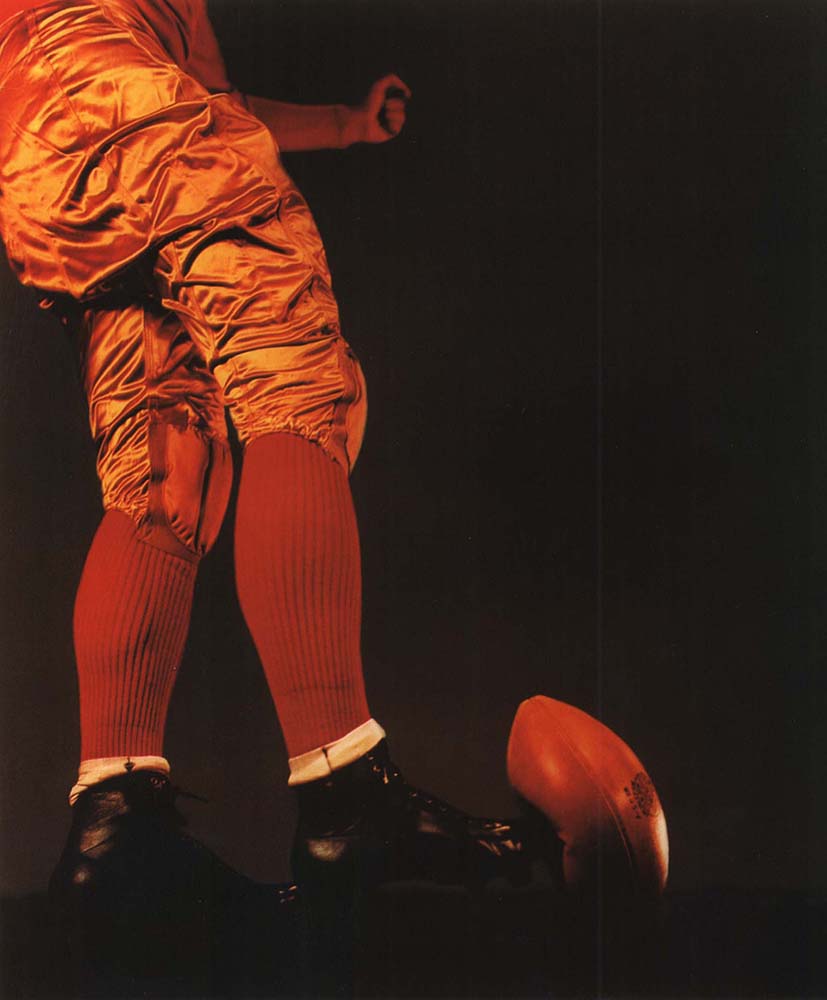About the Photographer
Edgerton, Harold
American, 1903-1990
In 1931 Harold Edgerton invented a stroboscopic light that had wide applications in industry as well as the potential to revolutionize photography. This first highly powerful, extremely fast, and reusable flash not only opened new territory for scientific examination, but established a new art form, a new documentary mode, and a new kind of journalism. Edgerton became the first to illuminate nighttime landscapes and darkened interiors, and his technology was capable of freezing the quickest of actions. Football Kick is one of the first color photographs made with the use of a strobe.
Born in Fremont, Nebraska, in 1903, Harold Edgerton received a BS degree (1925) in electrical engineering from the University of Nebraska, and his MS (1927) and DSc (1931) in electrical engineering from the Massachusetts Institute of Technology. In 1931 Edgerton developed the stroboscope, the flash mechanism that revolutionized high-speed and stop-motion photography. The photographs he began taking with this invention have been widely exhibited, published, and collected. An esteemed educator, Edgerton received several honors and awards, including the Medal of Freedom from the War Department (for achievements in nighttime aerial photography), the National Medal of Science, and the Progress Award of the Society of Motion Picture and Television Engineers. He also worked with Jacques-Yves Cousteau and developed flash equipment for underwater research. Edgerton died in 1990.


